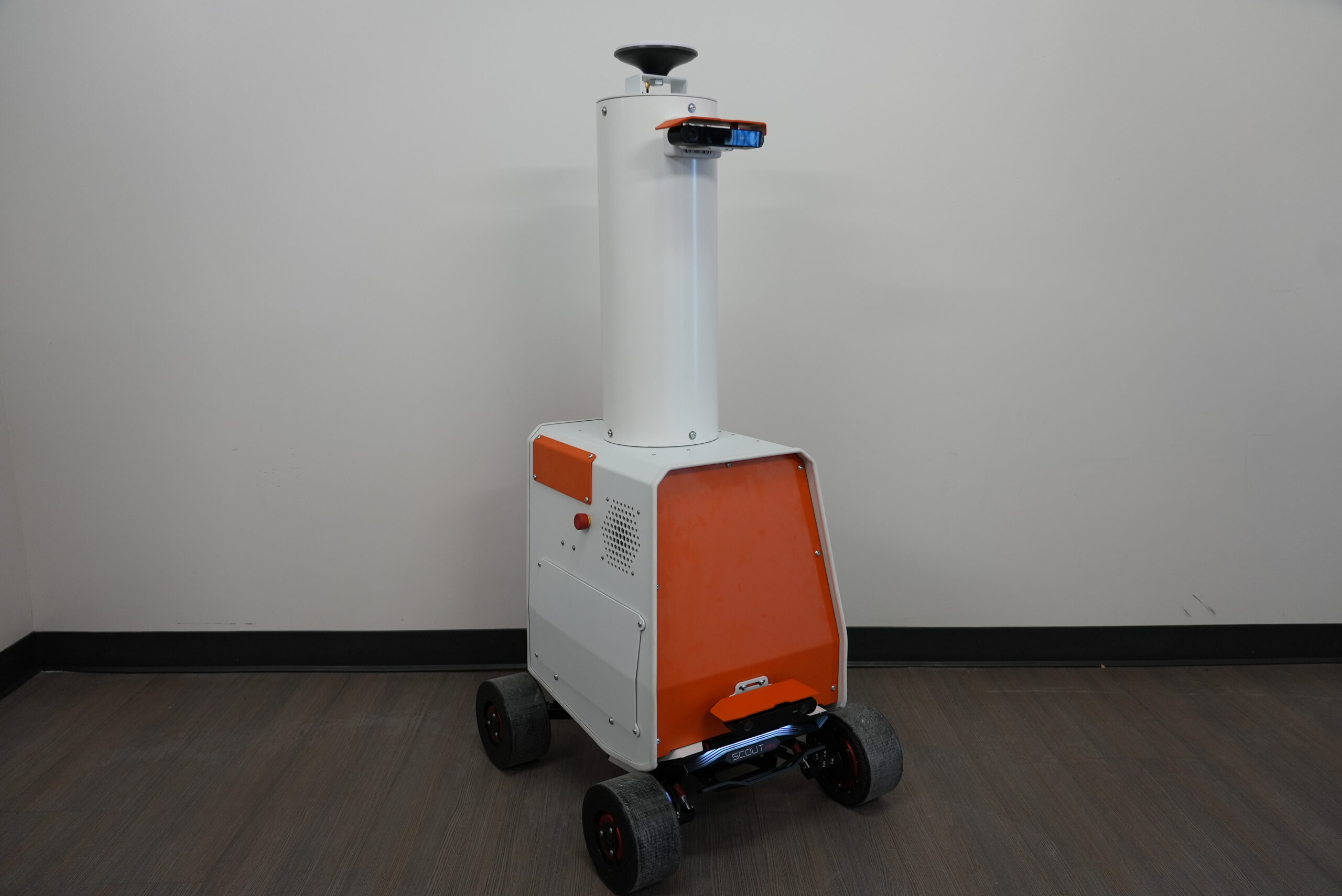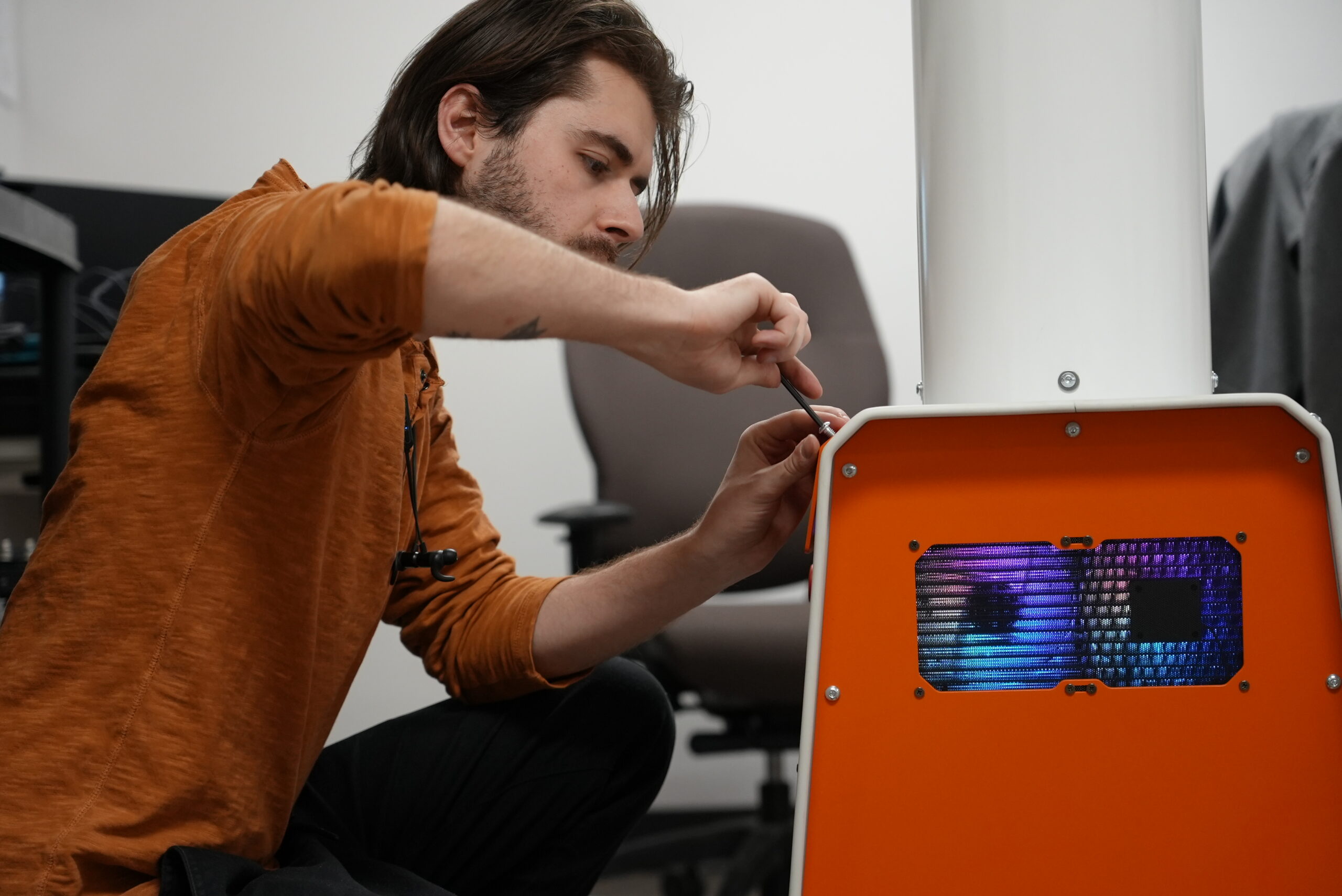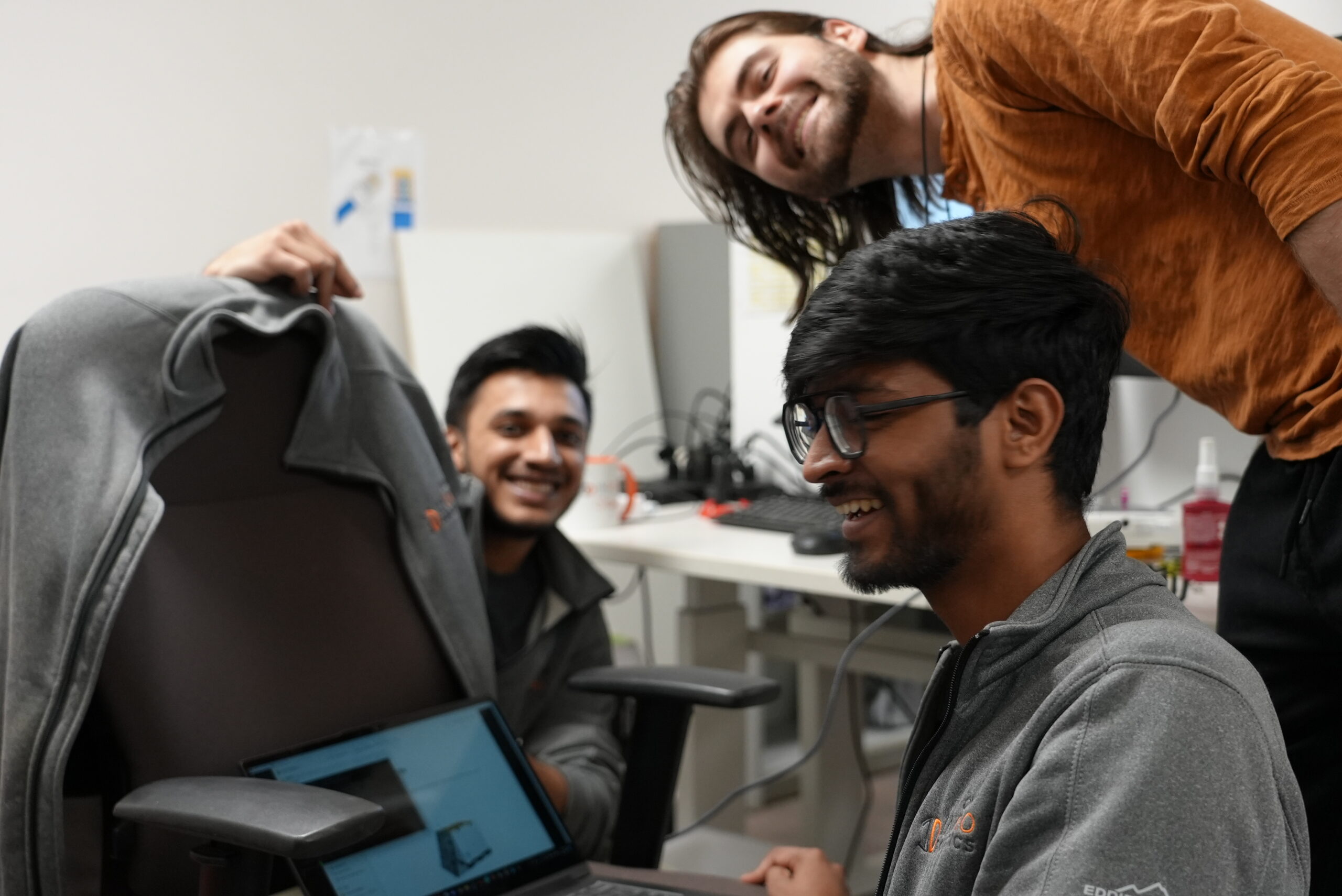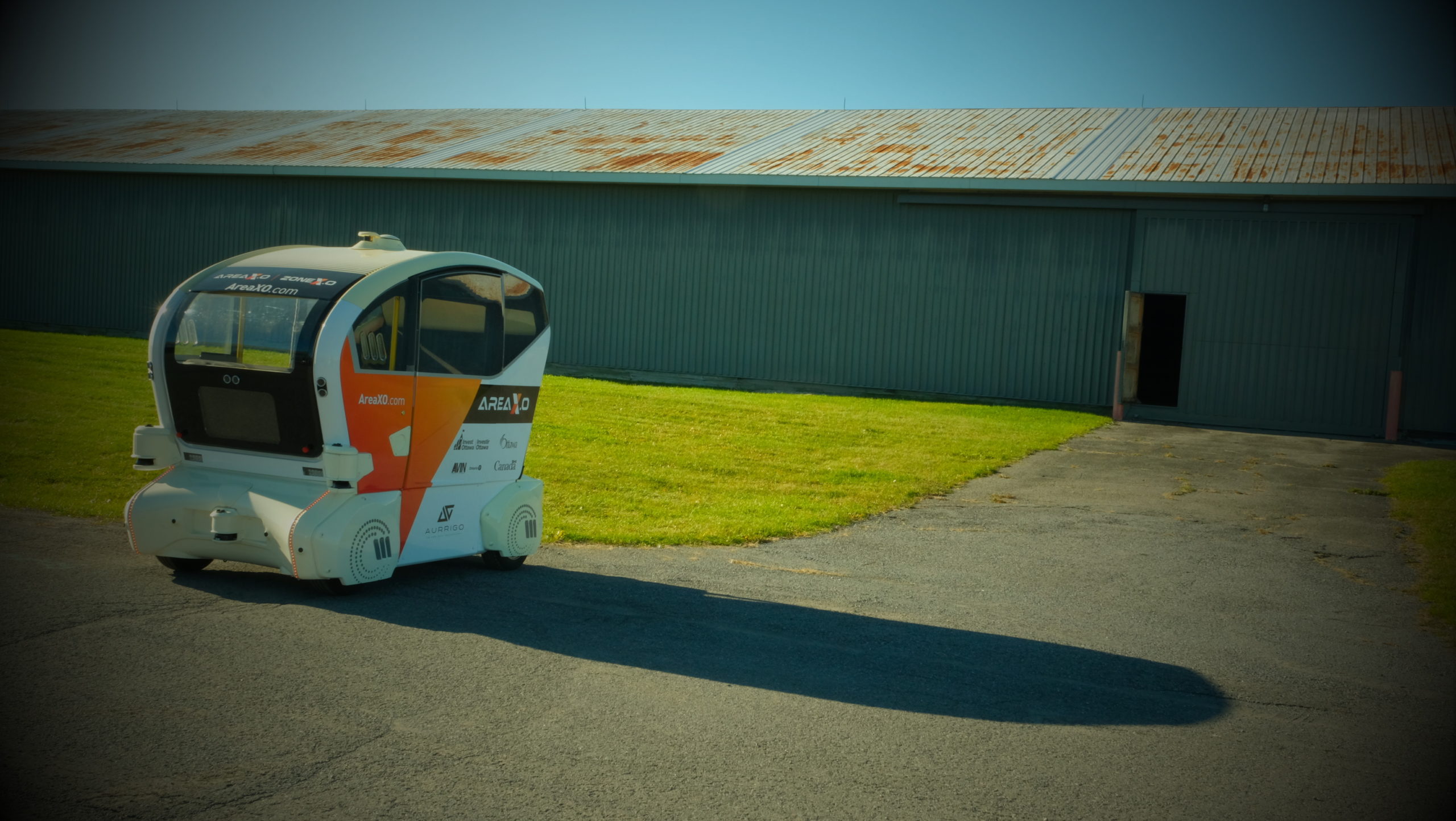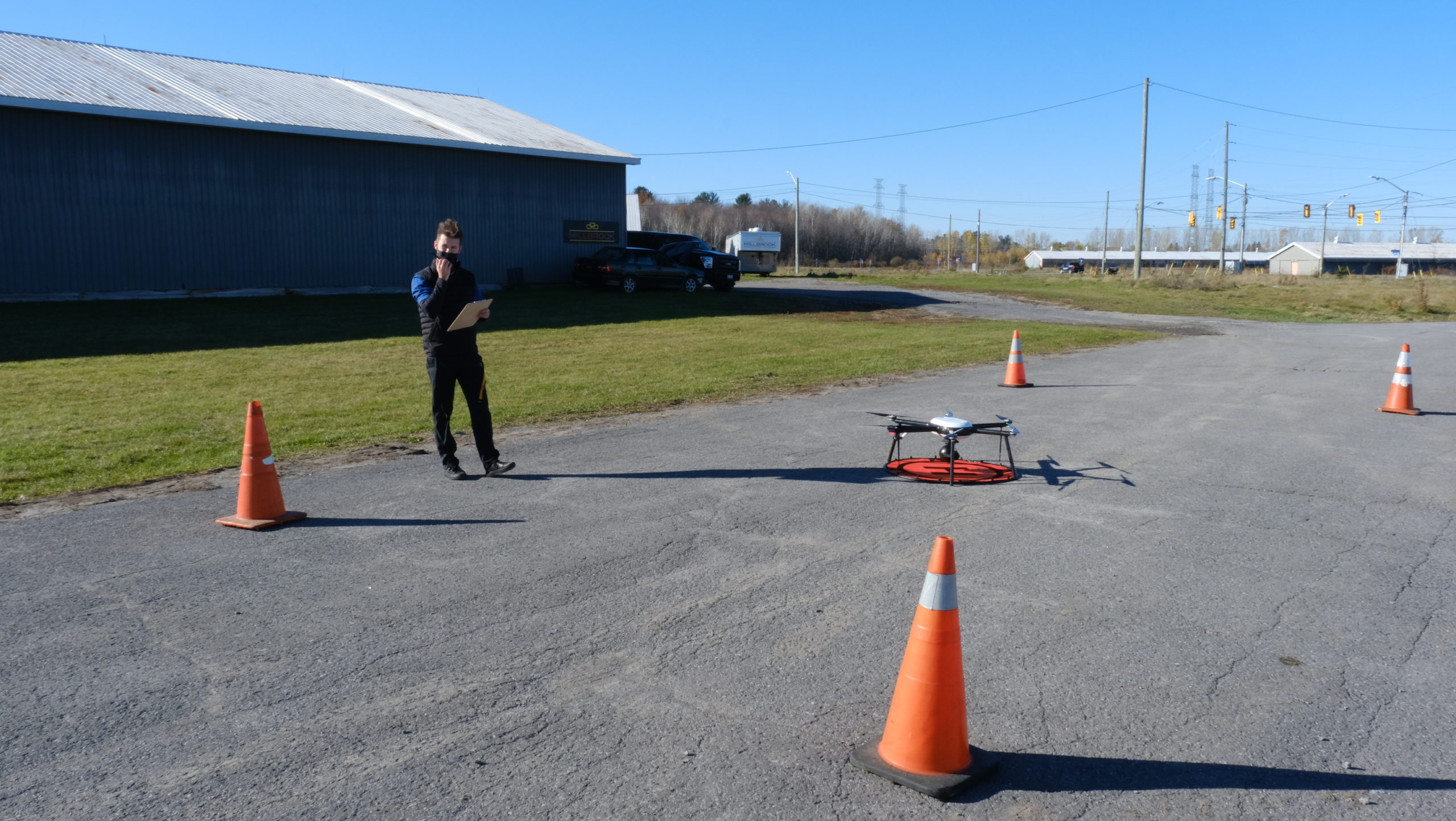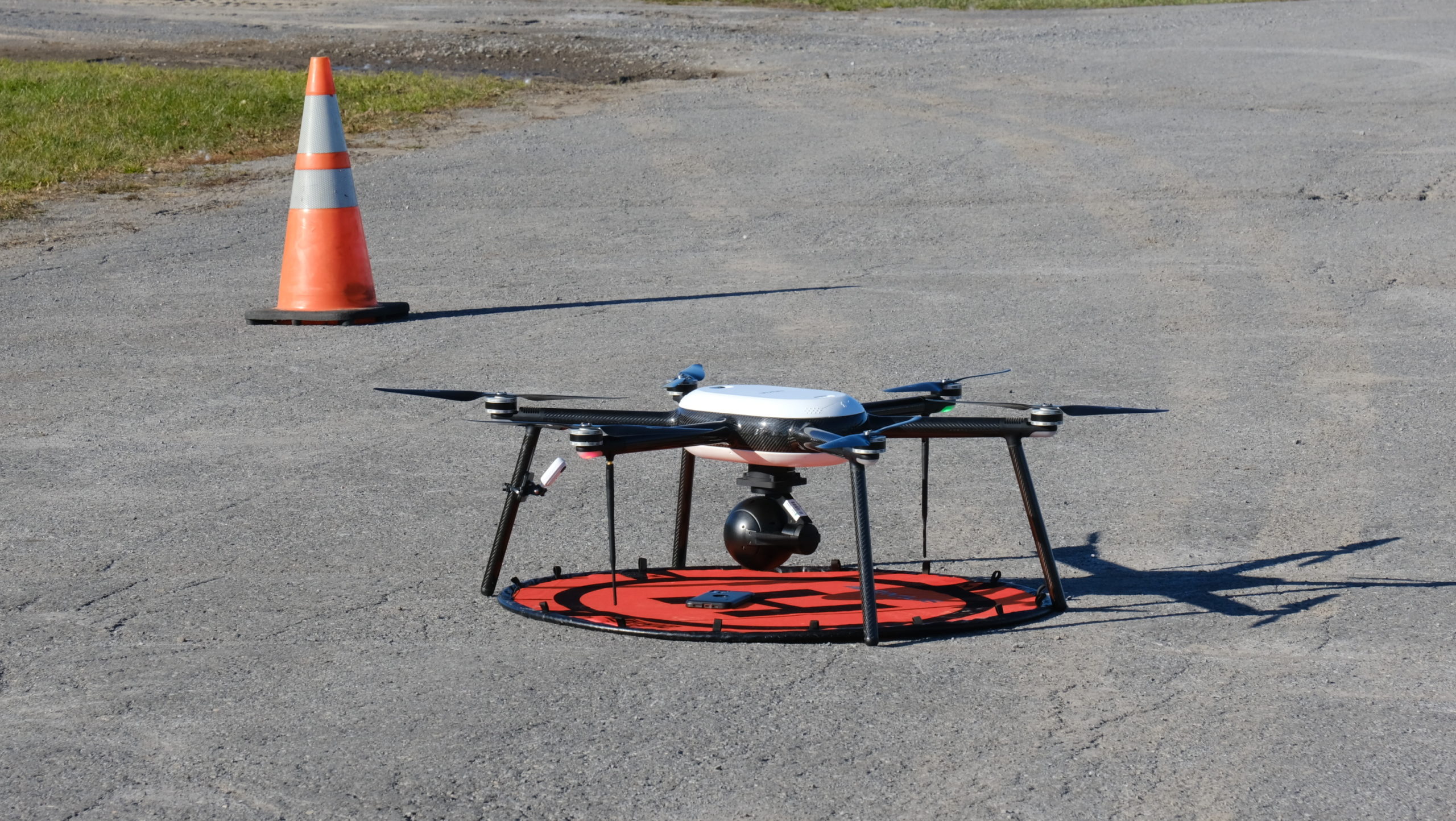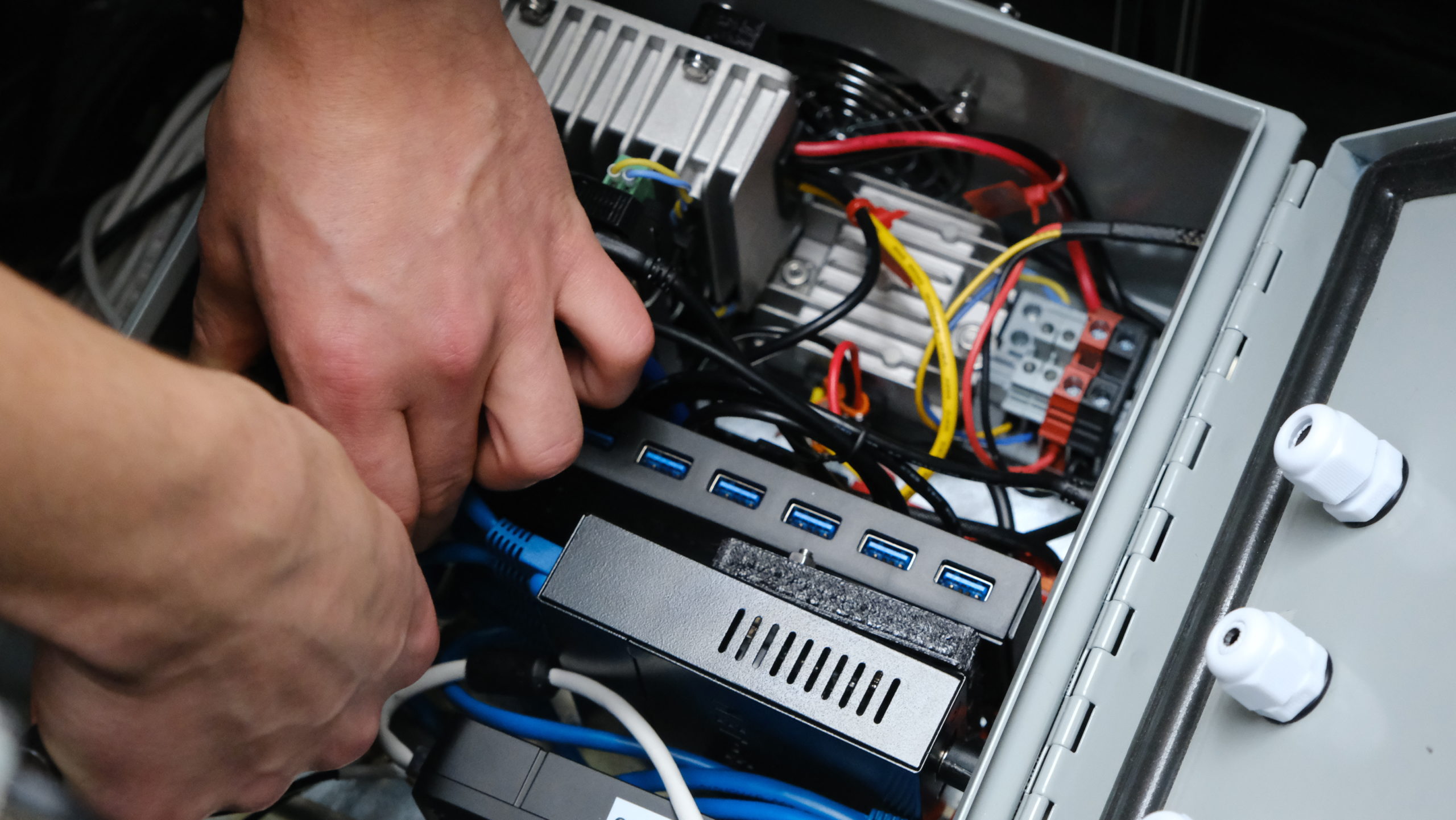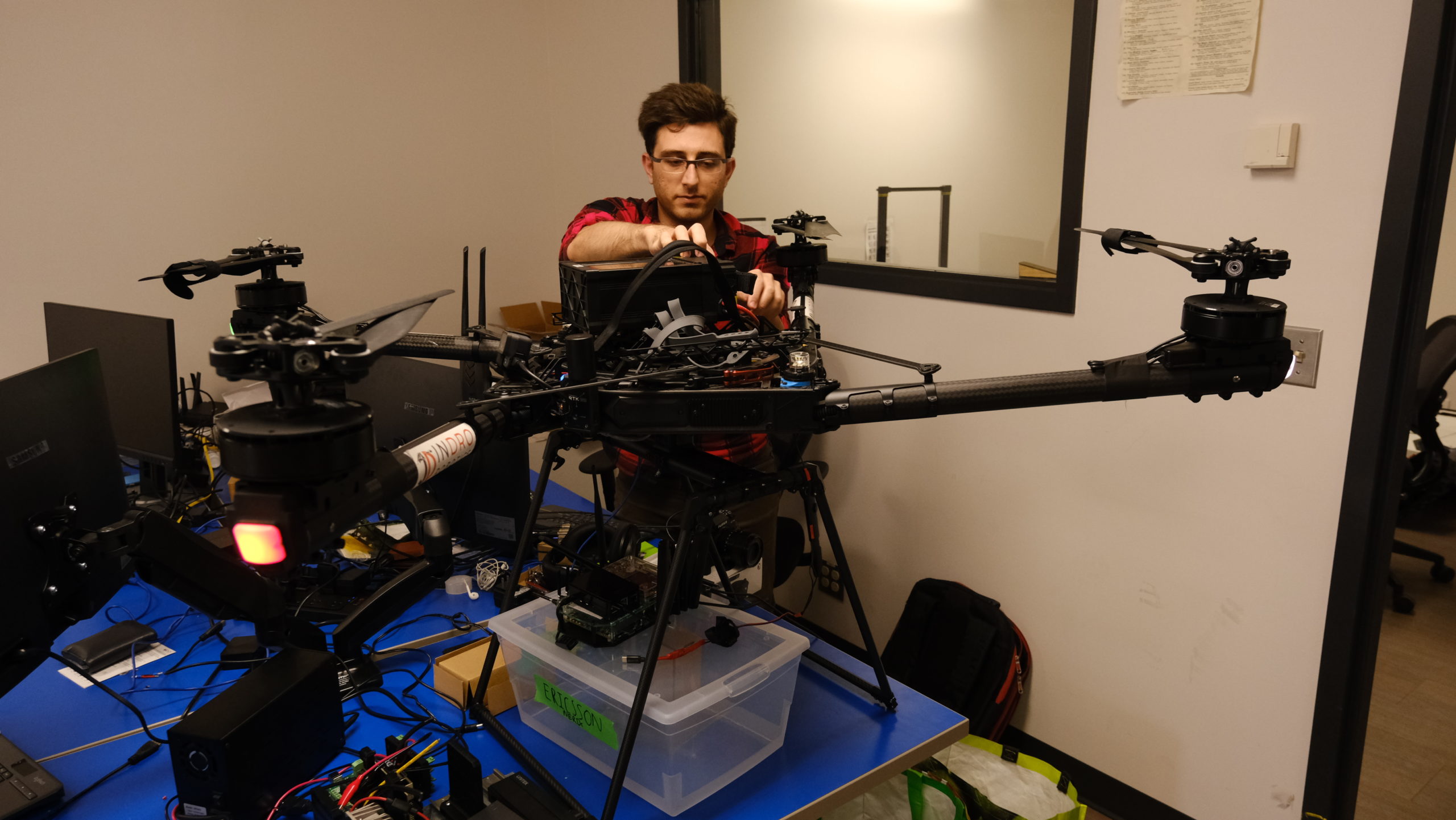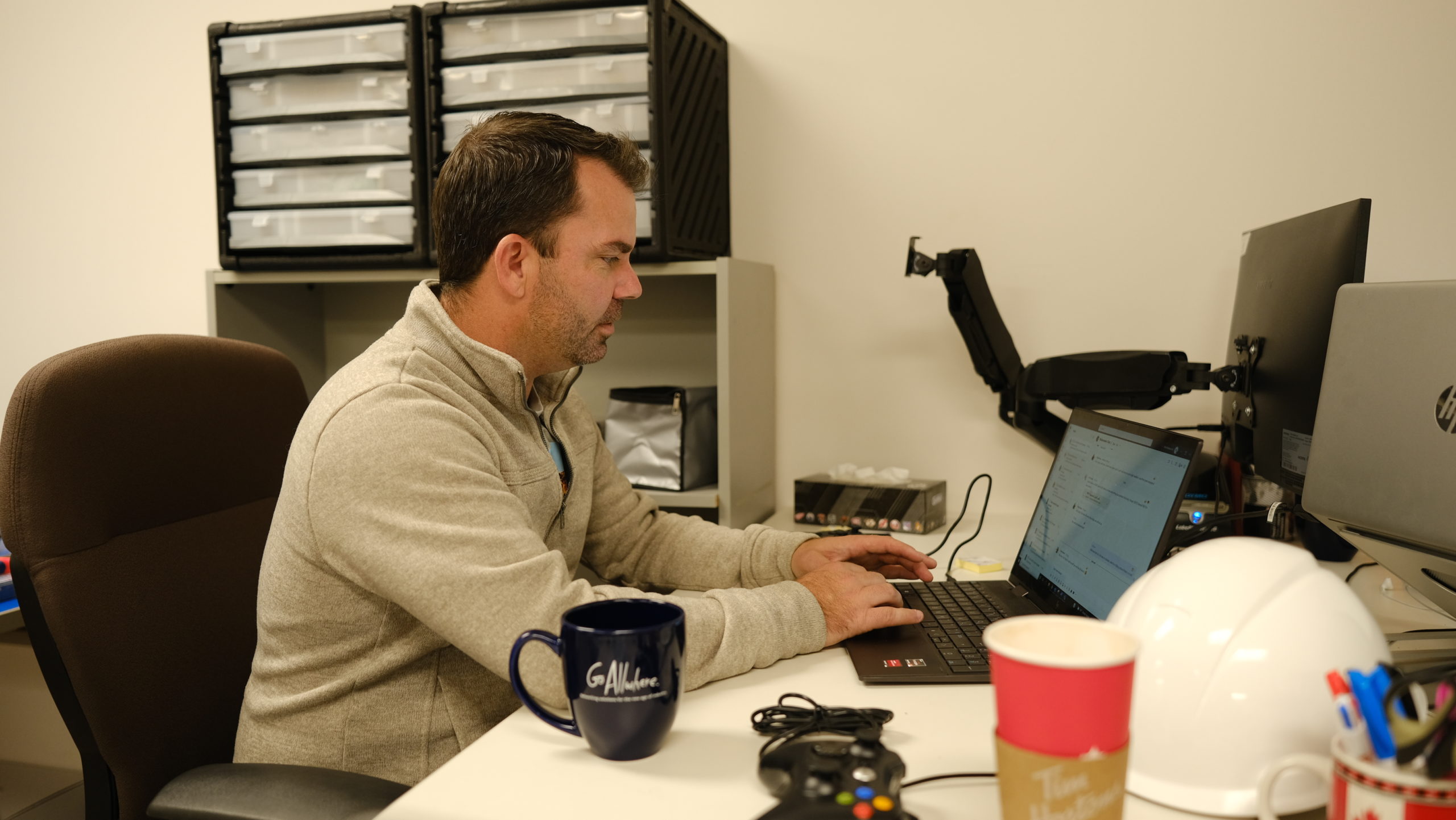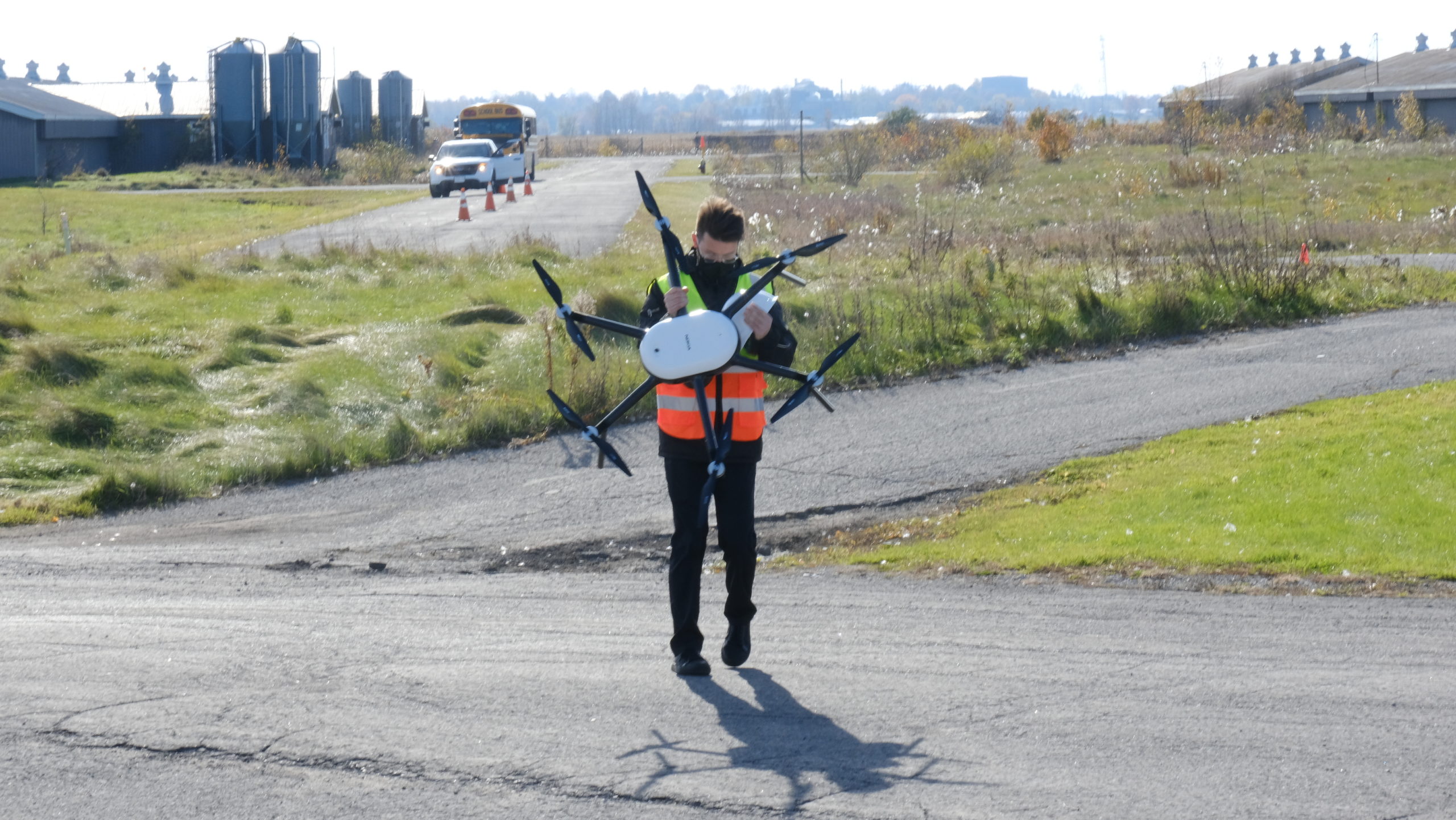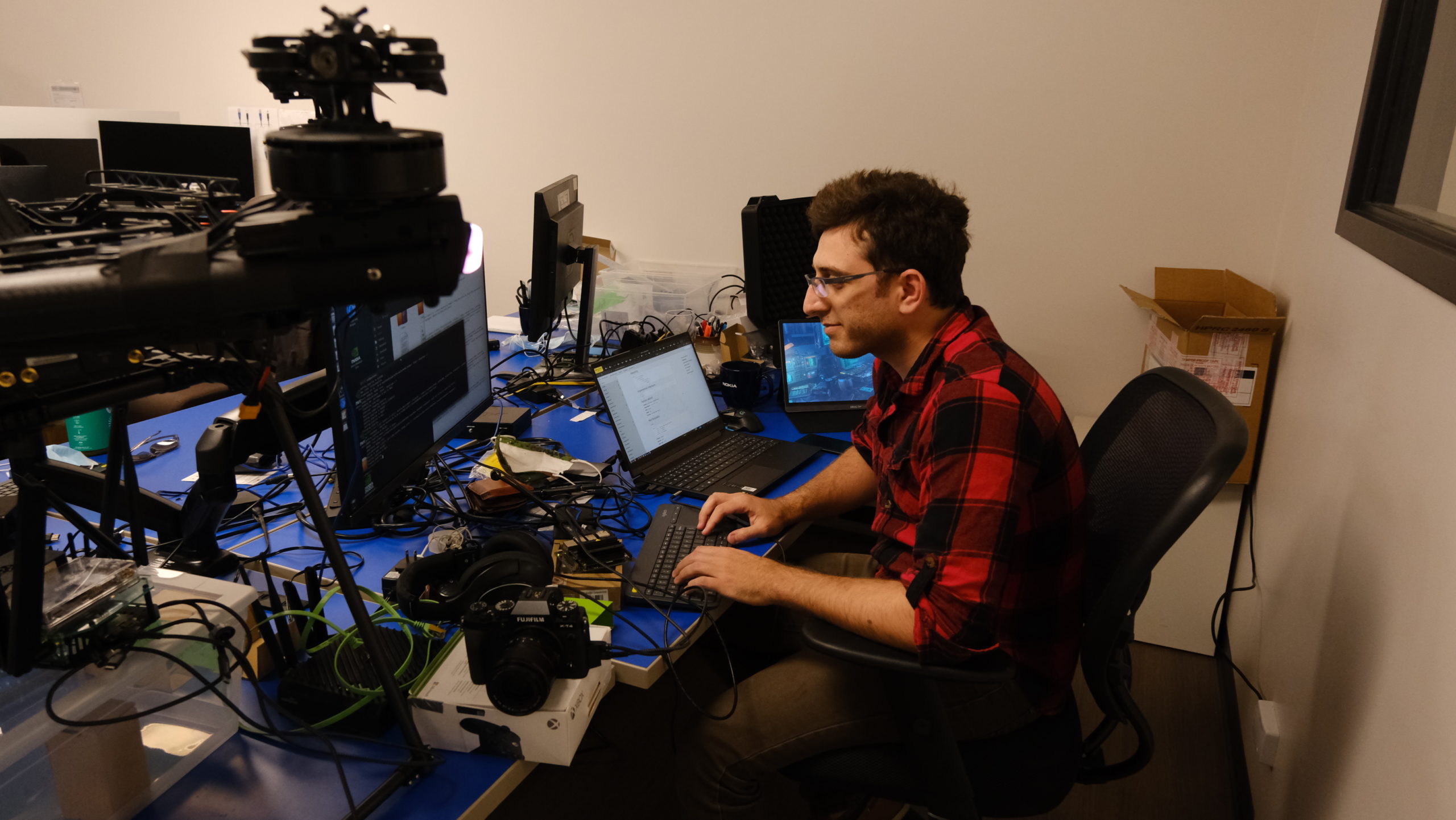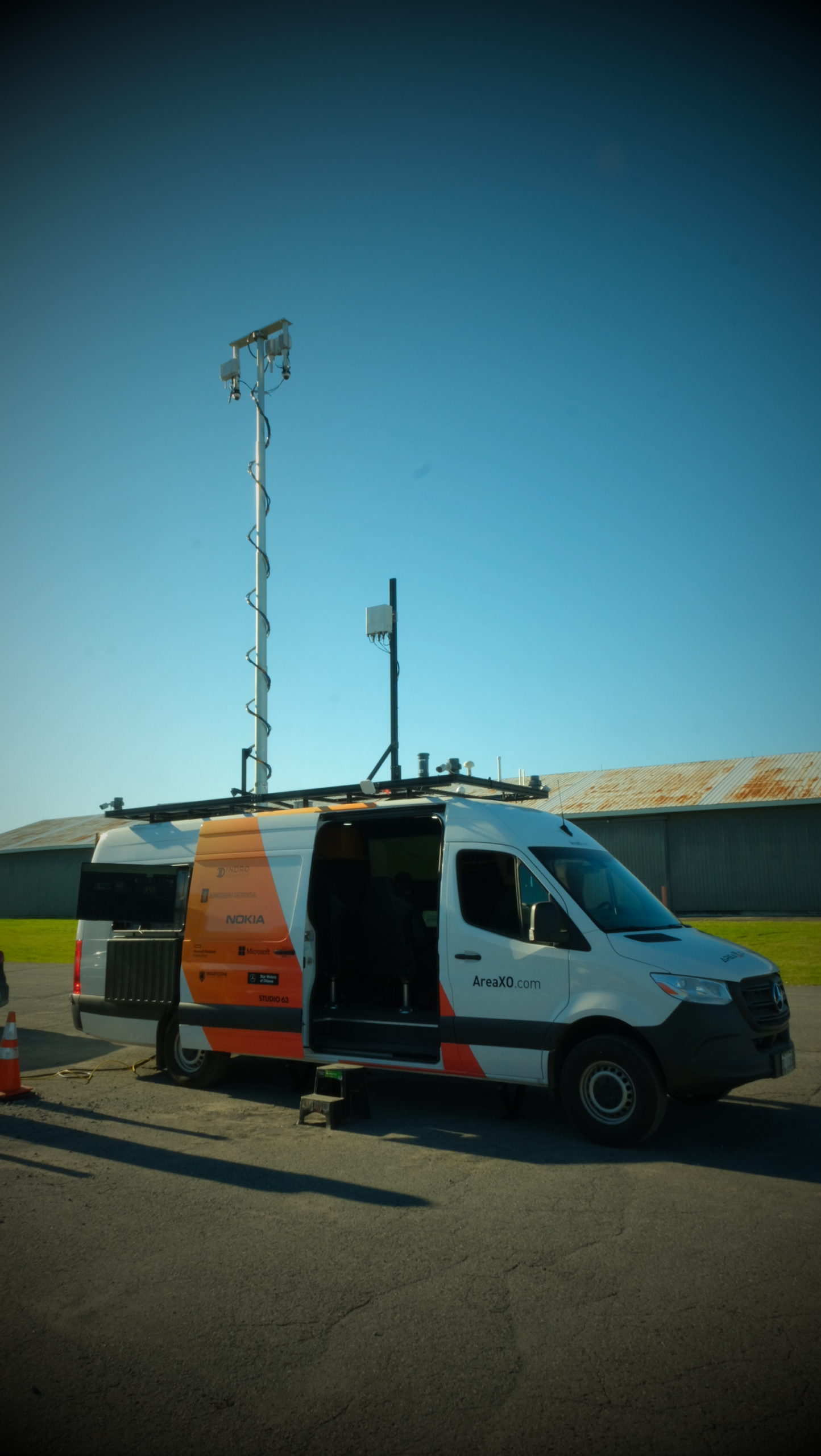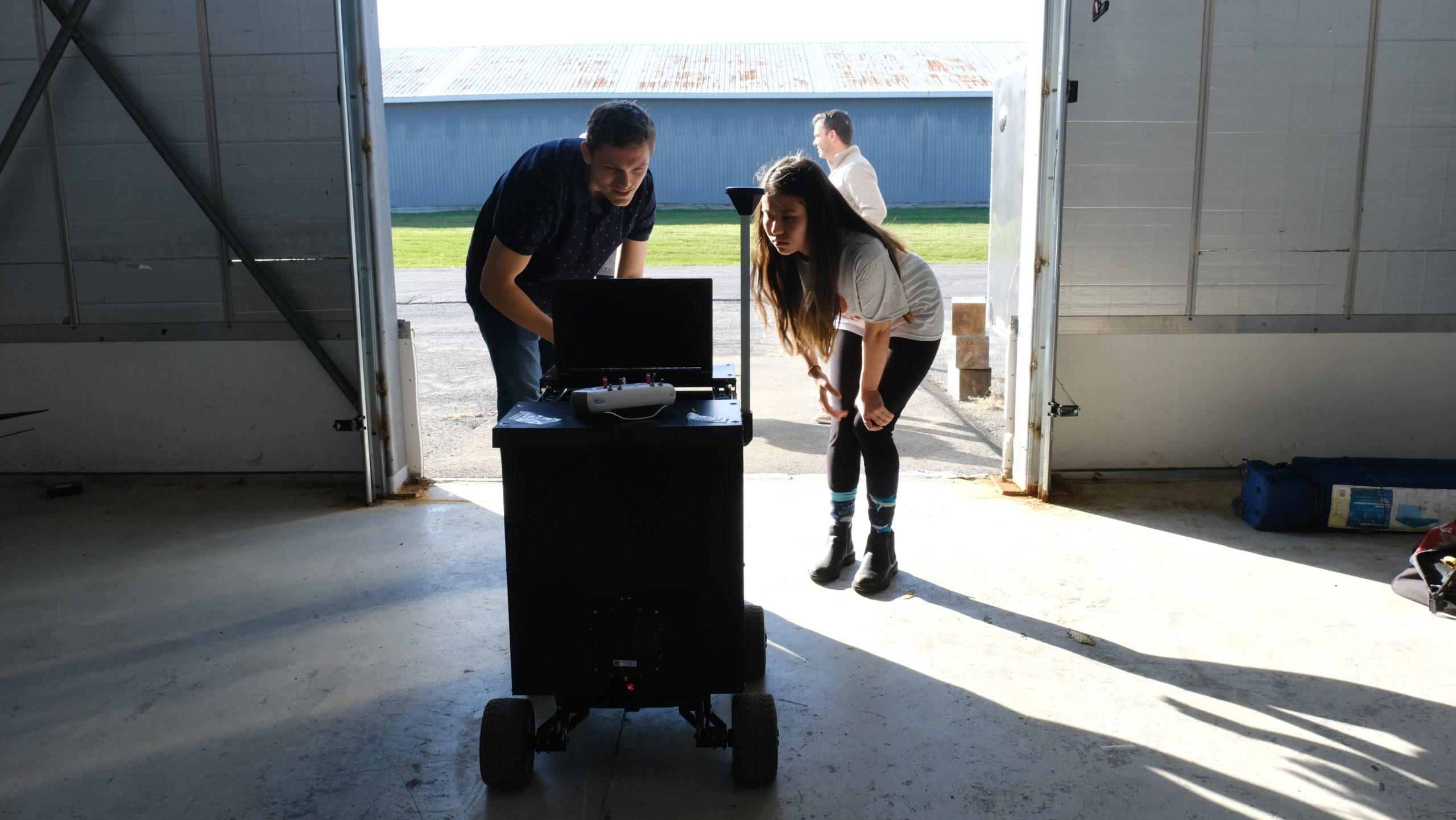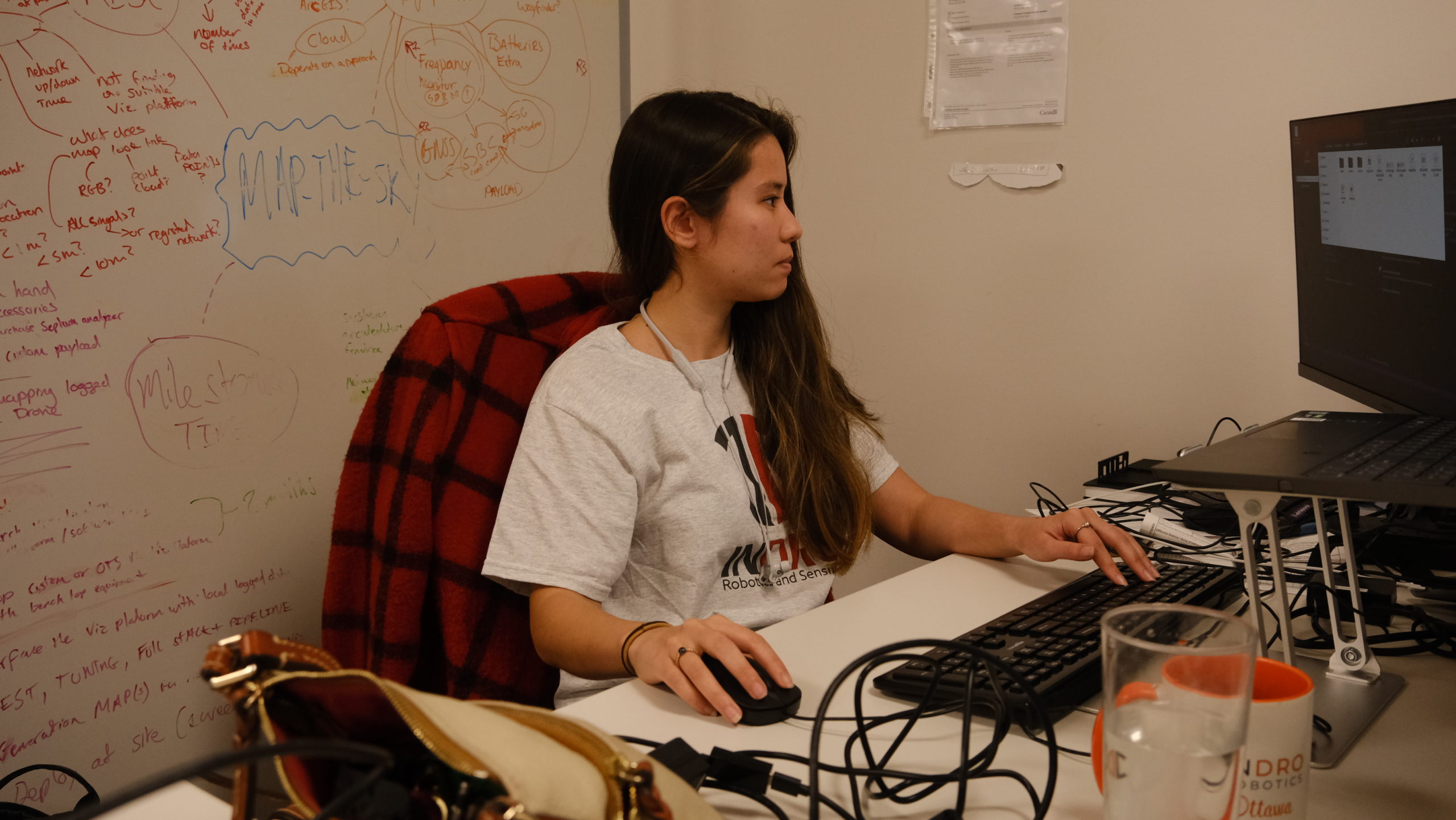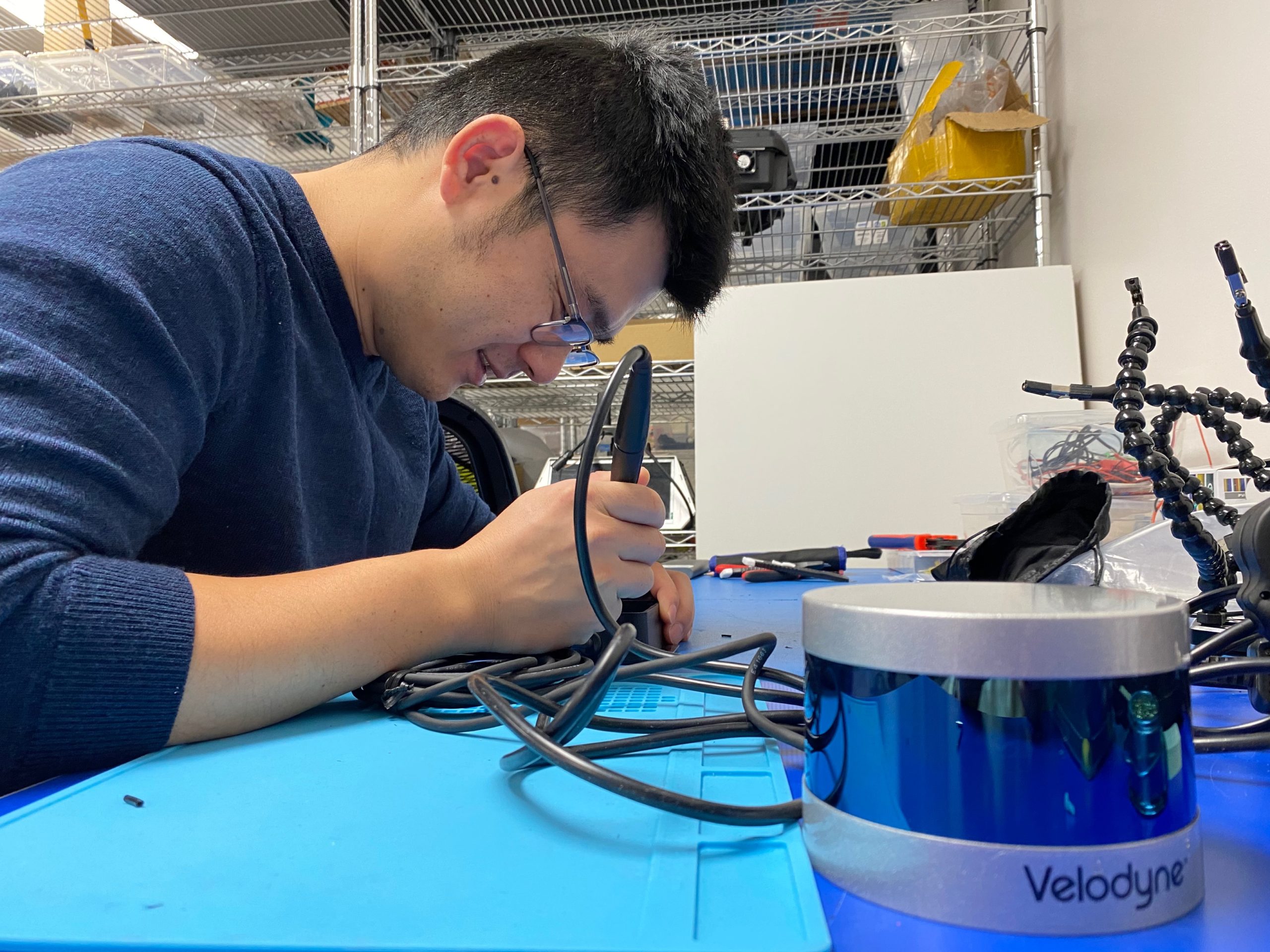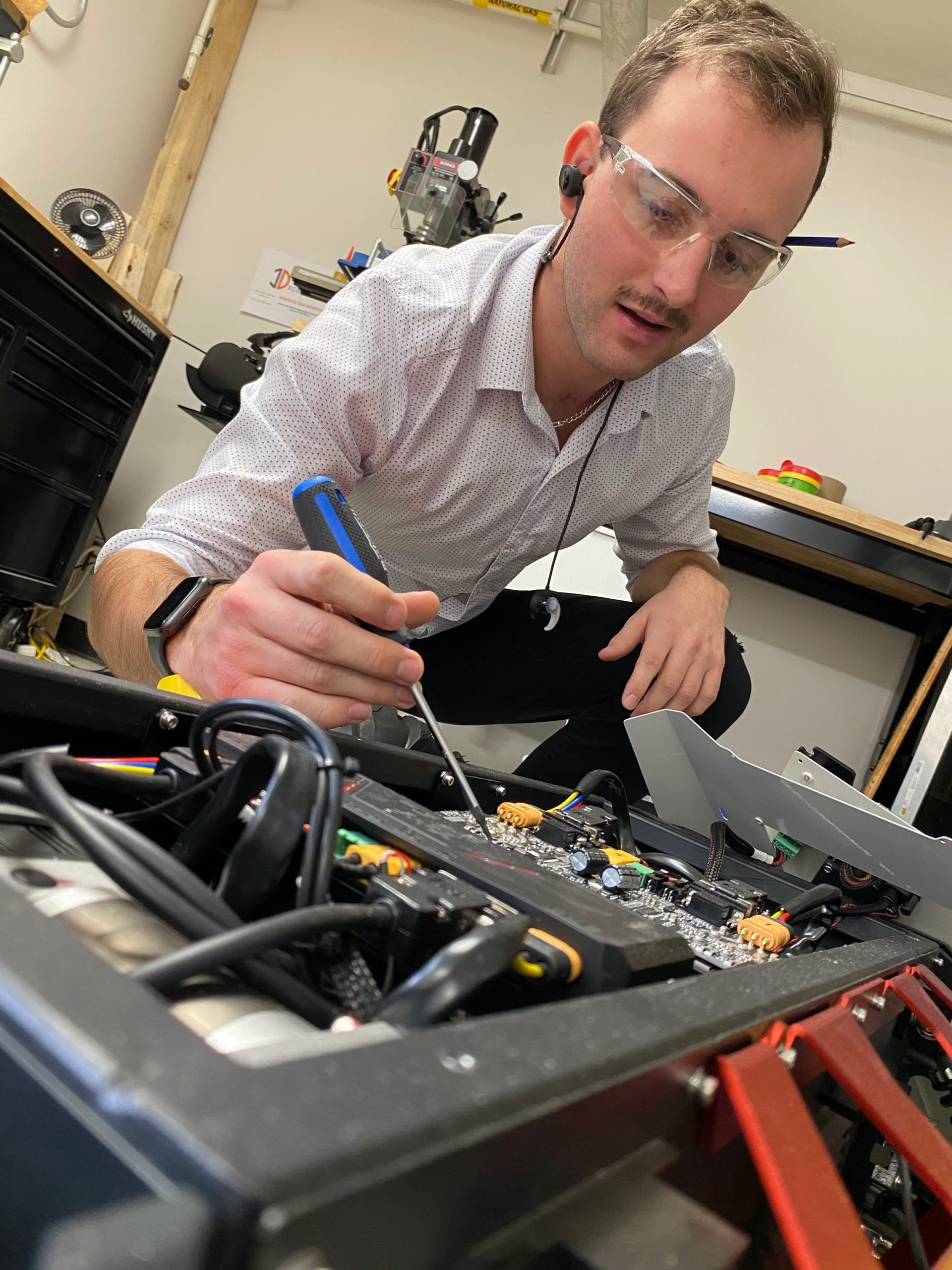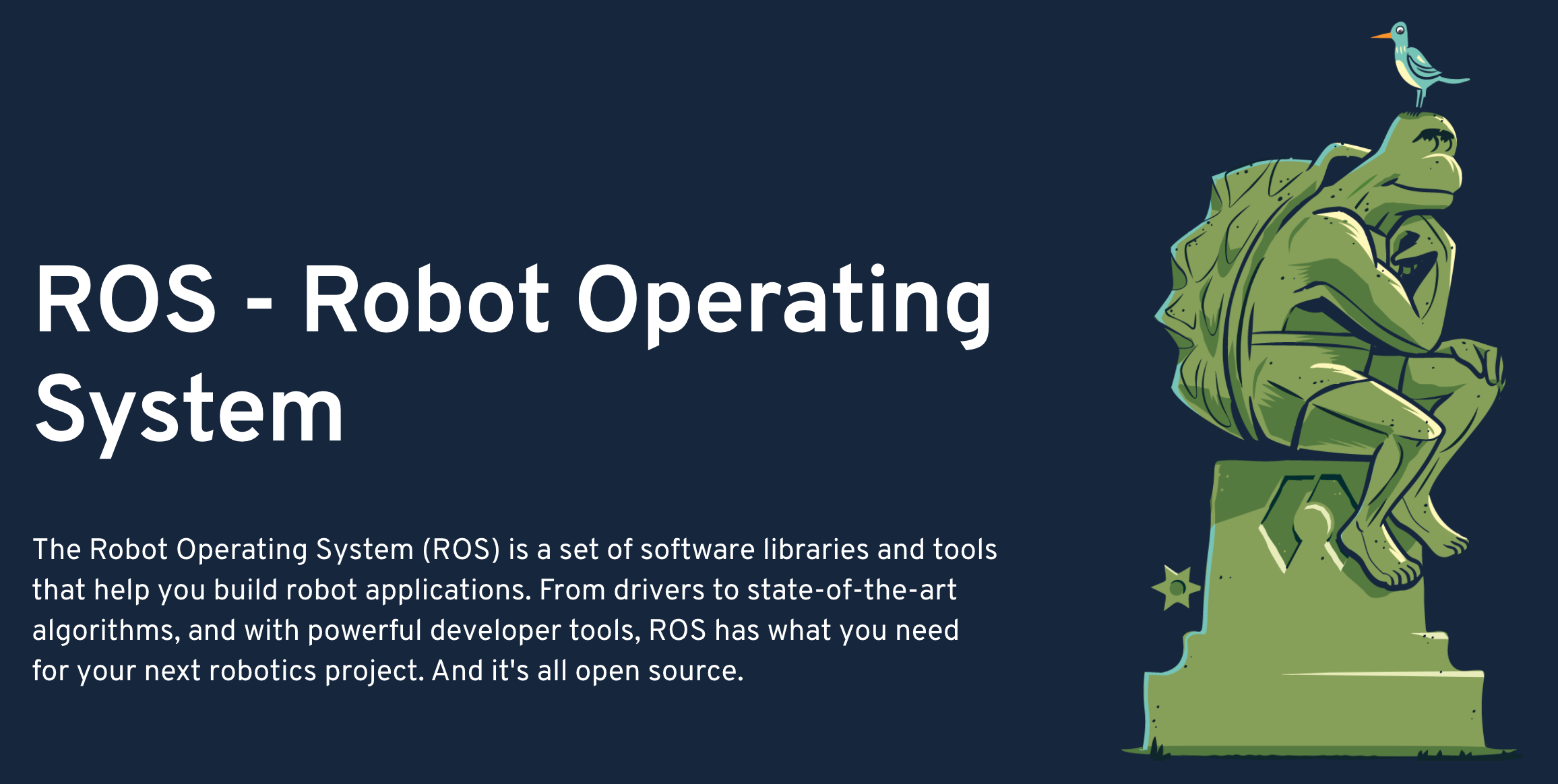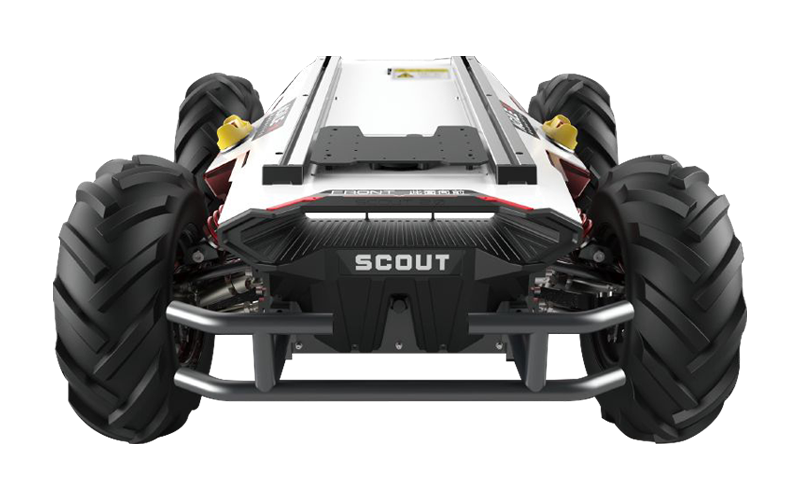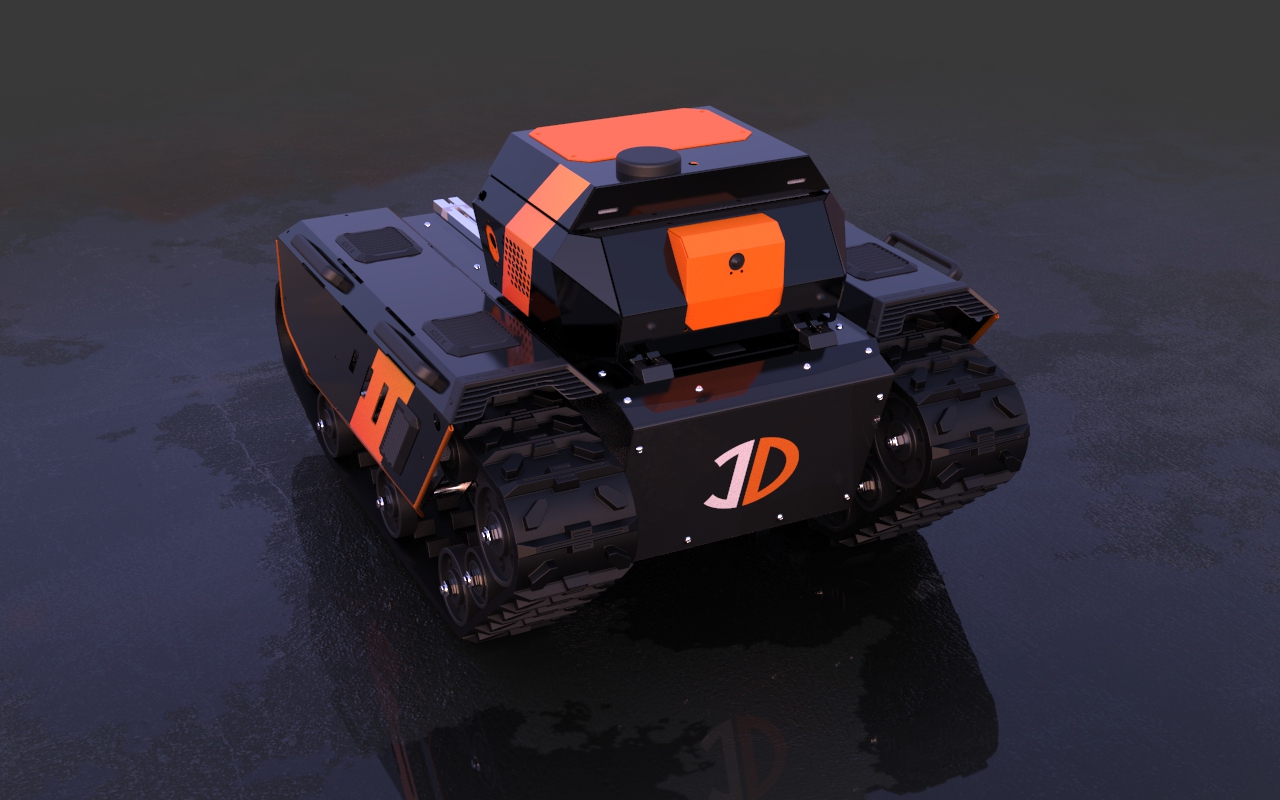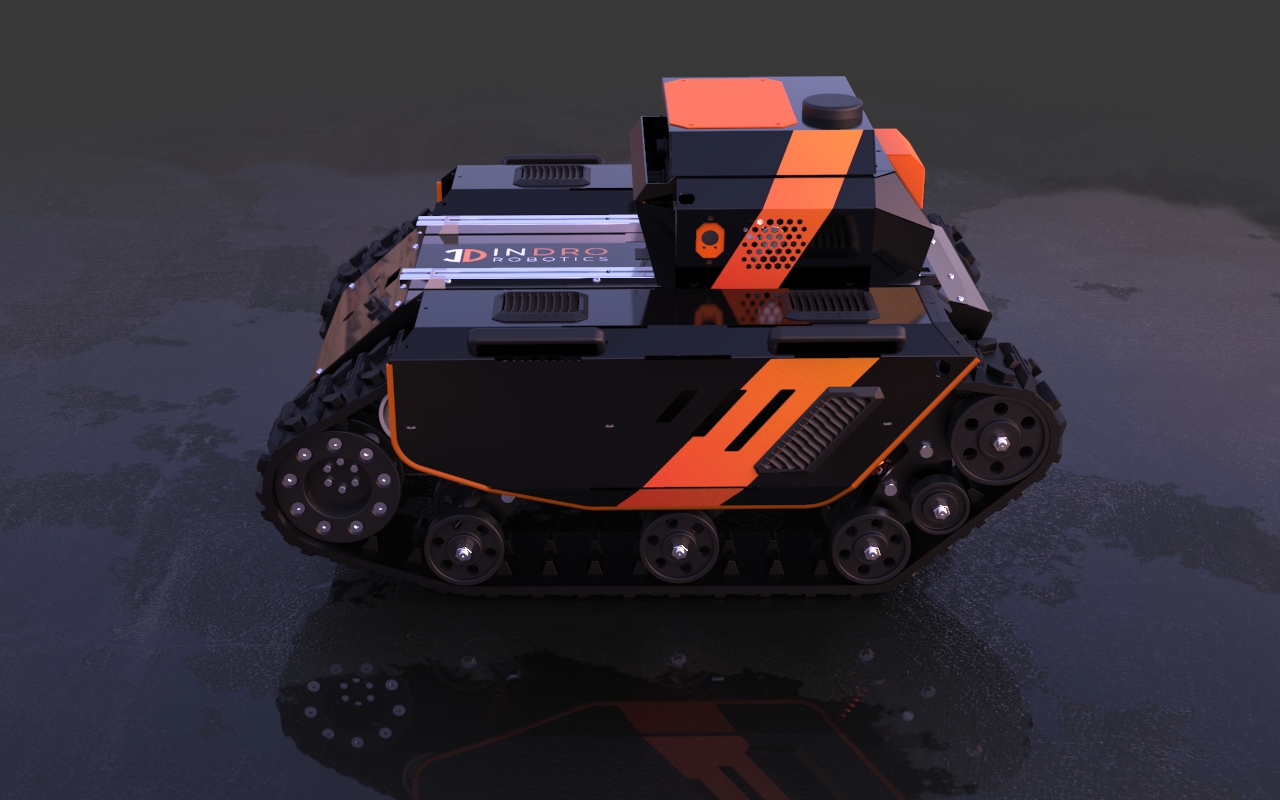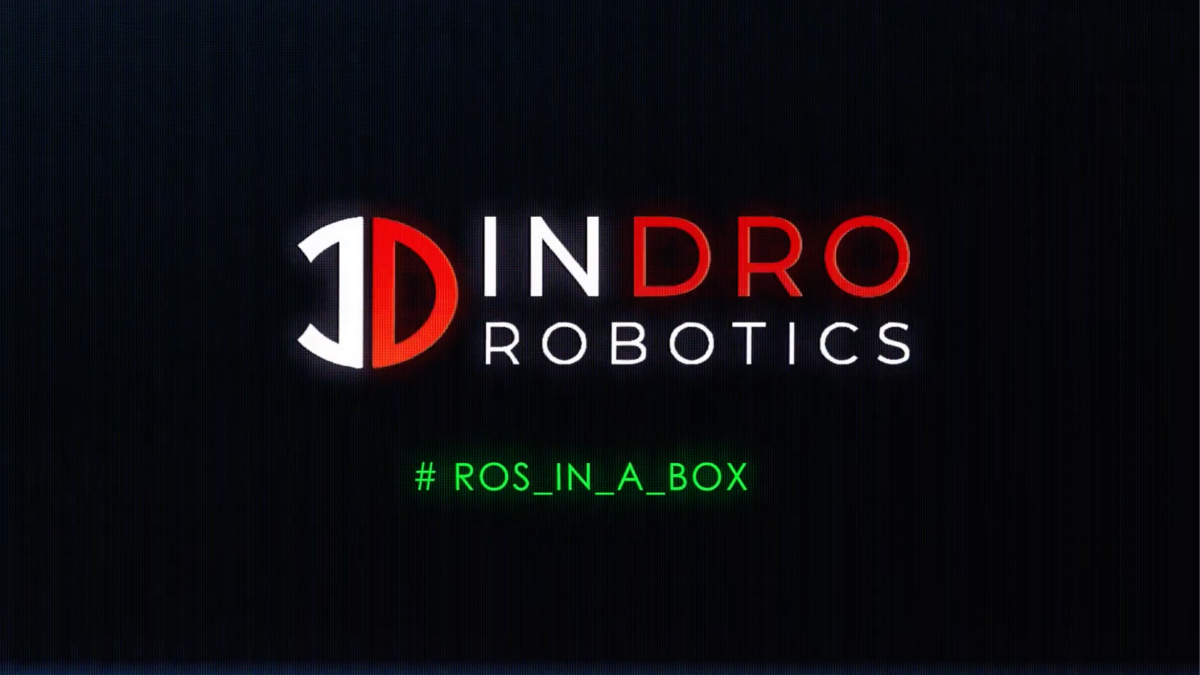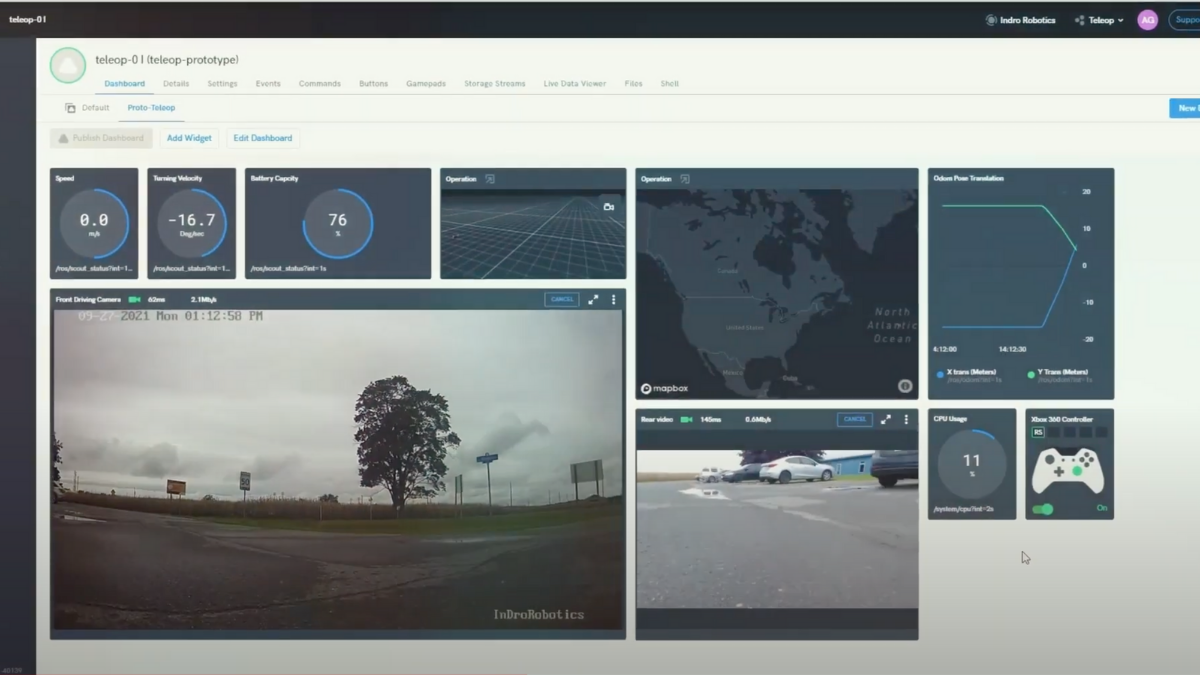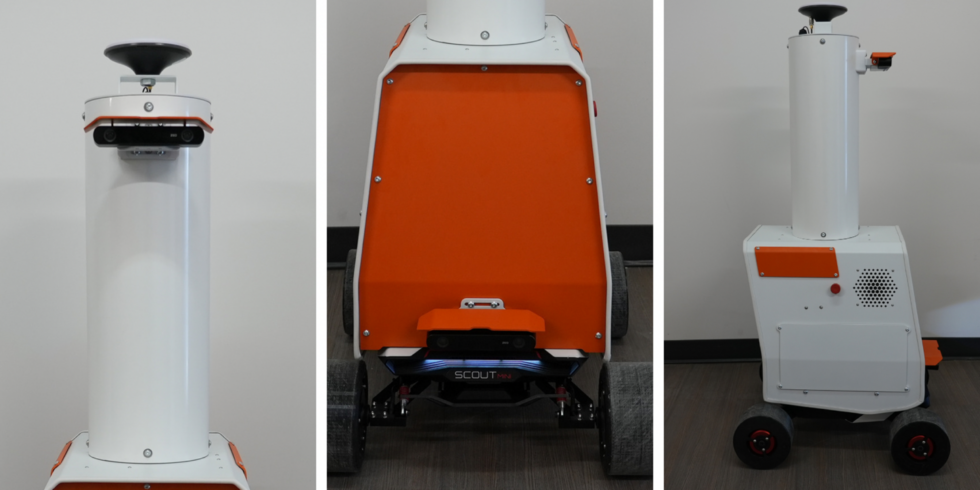
InDro builds, delivers custom robot to global client
By Scott Simmie
We’ve built a new robot we’d like to tell you about.
It’s for a highly specialised use-case scenario for a global client. (And when we say global client, it’s a household name.)
This isn’t the first project where we’ve been tapped by a heavy-hitting company to design and build custom robots. We have ongoing contracts with others, where unfortunately NDAs prohibit us from disclosing pretty much anything. (We can tell you that one of the ground robots we’re building for one of those clients is pretty big.)
In this case, the client has agreed to let us tell you a fair bit about the product, providing we don’t reveal their name. We think this is a really intriguing robot, so we’re going to share some details – including images of the final product.
Here it is. And, by the way, it’s as tall as the average person. The sensor poking out on the right near the top of the cylindrical portion is positioned at eye-level.
NOT A PIZZA OVEN
With that stretching, stovepipe-like neck, it might look like a pizza oven on wheels. But it’s not. It’s designed that way so that sensors can be roughly at the head height of human beings. The box at the bottom could be thought of as a computer on steroids.
That’s because the client wanted this robot for a very specific purpose: To be able to navigate complex crowds of people.
“The client wants to use Vision SLAM (Simultaneous Localisation and Mapping) to essentially detect humans and pathways through chaotic environments,” says Arron Griffiths, InDro’s Engineering Manager. Arron works out of our Area X.O location, where the robot was fabricated.
“Think malls, shopping centres, and stuff like that where humans are mingling to navigate around. And there’s no really defined path, the robot must organically move around people. Yes, you’d have an overall predetermined path with a desired destination, but once the chaos of humans comes in the robot would safely meander its way through crowds.”
LOTS OF TECHNOLOGY
That’s not a simple task. The client is going to supply its own autonomy software, but InDro had to work closely with them on the robot’s design and capabilities.
We mentioned earlier that this robot is SLAM-capable. That means it can map its surroundings in real time and make its own decisions – while it’s moving – about where in the ever-changing environment it makes sense to go to next. Two ZED depth cameras provide a detailed look at those surroundings (one close to the ground, the other at human eye level). So it’s constantly scanning, mapping, and making decisions about where to move next in real-time.
This is a data-dense task that requires a *lot* of onboard computing power.
“It’s basically a really powerful desktop computer on wheels,” says InDro Account Executive Luke Corbeth. “It’s outfitted with serious computational power, including the same graphic cards that people use to mine bitcoin.”
And that posed another challenge for our engineering team. The client wanted the robot to be able to operate for several hours at a time. But that advanced computing capability really puts a drain on power.
“Once you stick these high-end computers into a battery powered robotic system, your run time drops like a stone,” explains Griffiths. “It’s a bit of a beast on power. That’s why we had to put a second battery into the unit. This is an excercise in finding a balance point, and producing a robot that will do a high-end deployment with all of this high end technology.”
CLIENT-CENTRED PROCESS
This wasn’t the first custom-robot that client has requested. The international company has a longer-term research project focussed on enabling a robot to navigate when surrounded by unpredictable human beings. It has developed, and will continue to tweak, its own autonomy software to carry out this task in conjunction with this robot.
InDro worked closely with the client on the design – both the technical requirements in terms of processors, sensors, graphic cards, run time – as well as the physical appearance. Because the client had some very tight timelines, InDro designed and built this robot in a very short period of time: Seven weeks from outset until the product was shipped.
“That’s extremely fast,” says Griffiths. “That’s the fastest custom robot I’ve seen in my working profession. You’ve got to think design cycles, manufacturing, outsourcing, testing. From this being nothing, to being shipped out in less than two months is incredible.”
SOLUTION-FOCUSED
But there’s a difference between carrying out an expedited task – and doing a rush job. The focus always had to remain on ensuring that the capabilities, design, build and testing of this machine would meet or exceed the client’s rigorous standards. And that meant even the tiniest details counted.
For example, we’d discovered with a previous robot using the same locomotion platform that there could be an issue on rough surfaces. Specifically, if you were turning a tight corner or accelerating while turning, the wheels could shudder and jump. This was especially an issue on asphalt and concrete.
InDro’s engineering team knew that with this robot any such shudders would be amplified due to the height of the machine; a minor shudder at the base would translate into significant wobbling at the robot’s top. That wasn’t something we wanted happening.
And so we created a solution. We covered the individual wheels with a 3D-printed wrap. This provides a barrier between the sticky rubber and ground, allowing the robot to slightly slide during such manoeuvres and avoiding those troubling vibrations.
Below: Detail of the wheels, with their new coating
CLIENT REACTION
When we pack up and ship a custom build, the client always gets in touch after they’ve received the product. That’s the moment of truth – and the feedback we eagerly await.
Not long after the robot arrived, an email from the client landed. It included the following:
“The robot is fantastic,” they wrote. “The craftsmanship is superb; the power on the base is enabling; the intricate way in which the computer fits in the base housing is incredible; the compute box + mast feels ‘just right’ (there’s no template for social robot design, but I feel like we got very close).
“All these things make me really confident that, with the right algorithms (my responsibility) we can safely and efficiently navigate through crowds. It’s a really special robot that I can’t wait to put in the field. Your team deserves a raise!”
This robot, though it can’t cook pizzas, is one of the most powerful Uncrewed Ground Vehicles InDro has built, at least in terms of raw onboard computational power. Engineering lead Griffiths believes its capabilities could make a variation of this machine suitable for other clients, as well.
“I think it’s a very good platform for clients who want very high computing power in a small form factor that actually has some range, some longevity to it,” he says.
Below: Even when they’re under the gun, our engineering team takes it all in stride
INDRO’S TAKE
We’re often working on projects like this. In fact, this isn’t the first major global client to tap InDro for custom builds. As our tagline states: “Invent. Enhance. Deploy.” That’s what we do.
“This was an expedited design, build and test of a completely new and computationally powerful robot,” says InDro Robotics CEO Philip Reece. “We know that InDro’s reputation rides on every product we ship and every service we provide. So we’re delighted to hear the client is as pleased with this robot as we are – and look forward to building more for them.”
Interested in what a powerhouse machine like this might do for you? Feel free to explore the possibilities by setting up a conversation with Account Executive Luke Corbeth.

